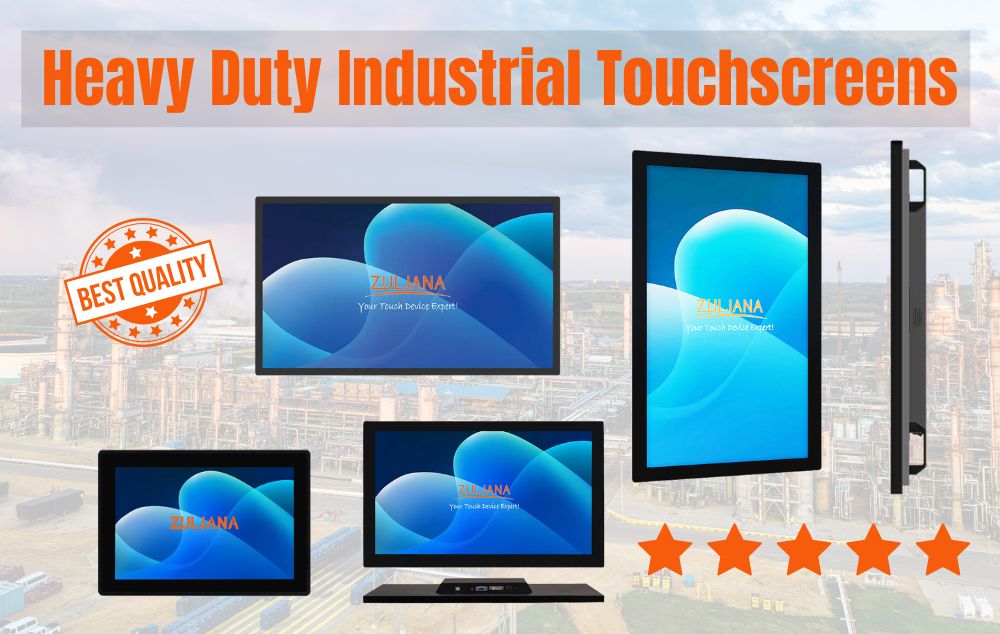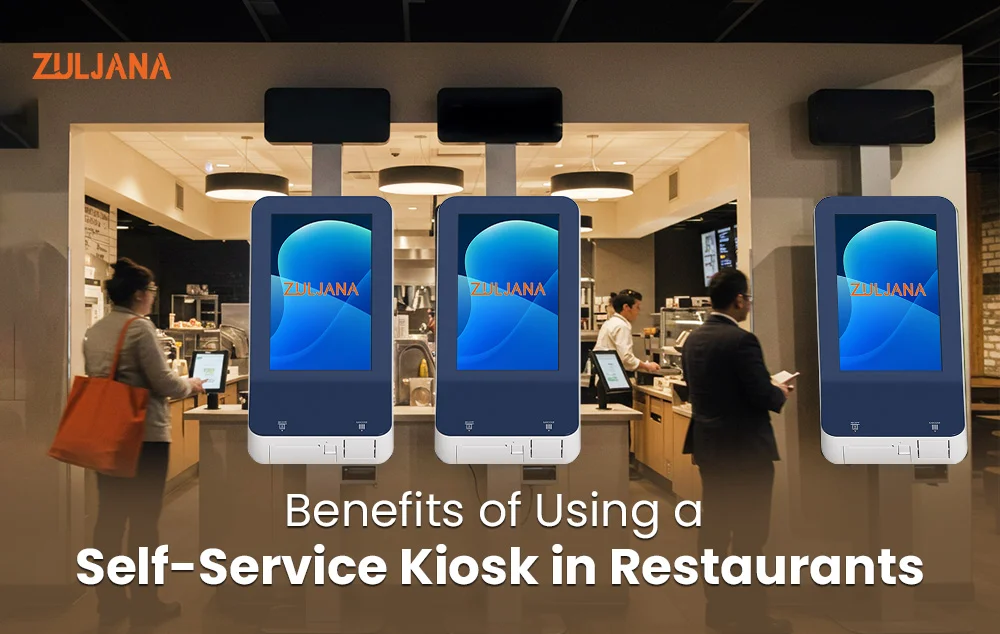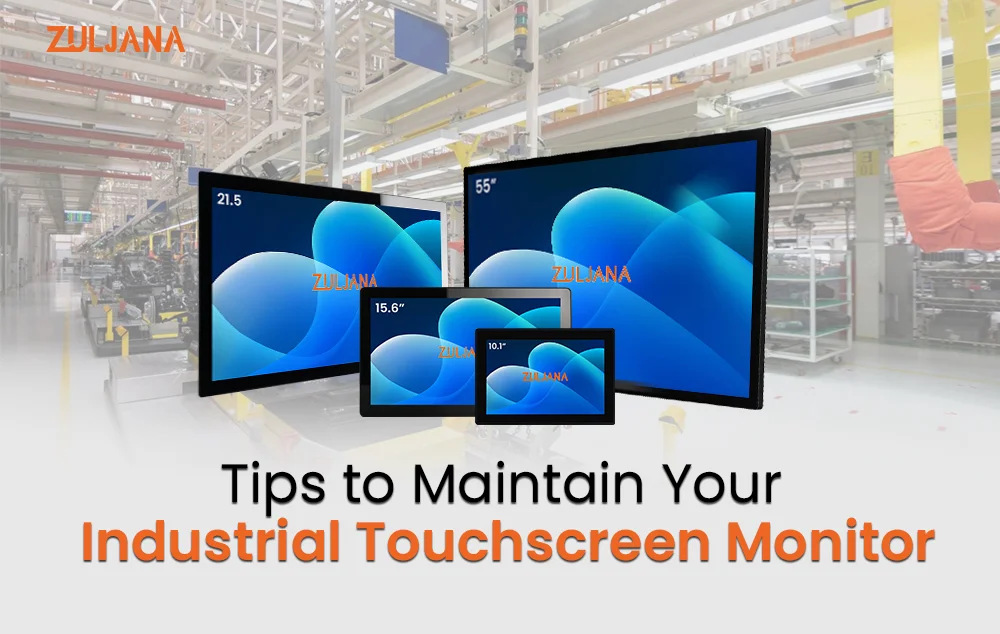Touchscreen technology has completely changed the way we interact with devices. It allows us to control them easily with a tap or a swipe, making our lives more convenient and efficient in many ways. However, not all touchscreens work perfectly. Some are slow or unresponsive, making it frustrating and difficult to control the device properly.
This is where capacitive touchscreens come in. Capacitive touch screens are designed to provide a smooth and easy user experience because they are highly responsive and accurate. This guide will explain what a capacitive touchscreen is and how it works. BaoBao Technology is a top-notch quality manufacturer and supplier of industrial touchscreen monitors for European clients.
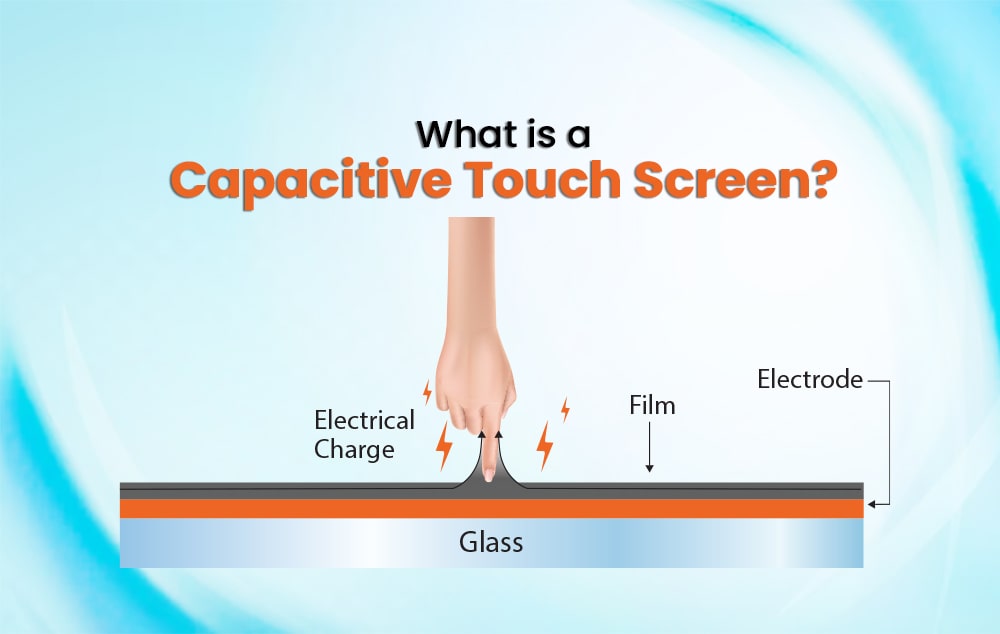
New Arrival: BaoBao Technology has recently introduced a Kitchen Display System (KDS)
What is a Capacitive Touch Screen?
A capacitive touch screen is a special type that allows you to control your device by touching it with your fingers. We use these technologies daily in devices like smartphones, tablets, and laptops, which are essential to our daily lives.
This screen can easily sense the signal and knows exactly where you touched it because it comes with a special layer that detects the electrical signals from your skin. This technology makes our interaction with devices smoother and more fun.
Now, let’s compare it to another common type of touch screen called a resistive touch screen.
Understanding Resistive Touchscreens
Resistive touch screens are different because they need some pressure to work. You need to press down on a resistive industrial touch screen, which pushes two layers together, letting the device know where you touched. In short, you need to press harder to work, and sometimes, it doesn’t feel as smooth. Resistive screens can work with anything, like a stylus or gloved hand.
How Capacitive Touch Screens Work?
Capacitive touch screens work using something called capacitive sensing technology. This technology allows the screen to detect your touch without needing any pressure. Instead of pushing down, you just need to touch the screen lightly.
The Mechanism Behind Capacitive Touchscreens
The capacitive touch screen has a special layer with tiny electrodes that create an electric field. These electrodes act like sensors and detect any changes in this field. When you touch the screen with your finger, the natural electricity in your body disrupts the field. The screen senses this disruption and identifies the exact spot where you touched it. BaoBao Technology is a manufacturer and a supplier of Sunlight Readable Monitors.
Layers of a Capacitive Touchscreen
Now, let’s discuss the different layers of a capacitive touch screen. First, there’s a glass layer on top that protects the screen. It’s smooth and allows you to glide your fingers across it easily. Under the glass, there’s a thin conductive layer that contains the electrodes. This layer helps the screen detect your touch.
The Touch Detection Process
When you tap the screen, your finger creates a tiny change in the electric field. The electrodes pick up this change and send a signal to the device, telling it what you want to do. This happens fast, which is why capacitive screens feel so responsive.
Types of Capacitive Touch Screens used in the European market
There are different types of capacitive touchscreens, but two of the most common are projected and surface capacitive touchscreens.
Projected Capacitive Touch Screens (PCT)
Projected touchscreens are primarily used in devices like smartphones and tablets. These screens are highly responsive and accurate because they have multiple layers that detect touches even when you touch the screen more lightly. So, you can quickly swipe and pinch with this screen.
This screen can handle multi-touch, which means you can touch it with multiple fingers at a time. This feature makes it perfect for game lovers and industrial workers.
Surface Capacitive Touch Screens
Capacitive touchscreens work with different principles. This screen comes with a layer of conductive material on the surface, which can sense touch. When your finger touches the screen, the electrical field around that area is disrupted, so the device knows where you tapped.
These screens are primarily used in devices like ATMs, Kiosks, and touchscreen monitors. Surface capacitive touchscreens are less sensitive than projected touchscreens, so they might need a stronger touch. However, these screens are still easy to use and perfect for public places where screens mostly interact with people.
Advantages of Capacitive Touch Screens
Capacitive touch screens have several advantages that make them popular on many devices.
- High Sensitivity and Responsiveness: The most significant advantages of this screen are its high sensitivity and responsiveness. It reacts quickly to taps or swipes, even to a light touch. This makes interacting with devices feel more natural and enjoyable.
- Multi-Touch Capability: Here is another interesting advantage, especially for game lovers and industrial workers. With capacitive screens, you can easily touch with more than one finger at a time. This means you can use two fingers to zoom in or out, and you can also play games that require two hands. In short, with this multi-touch feature, you can easily handle different tasks.
- Durability and Scratch Resistance: Capacitive touchscreens are scratch-resistant because they are built to last with strong glass. This means that no matter how much you use your screen, it will always look new, so you don’t have to worry about bumps and scratches.
- Clarity and Brightness of Display: These screens also offer excellent clarity and brightness. The colors are vibrant, and everything looks sharp. This makes watching videos, playing games, and reading text much more enjoyable. You can see everything clearly, even in bright sunlight.
Limitations of Capacitive Touch Screens
As we all know, capacitive touchscreens are everywhere nowadays, including smartphones, tablets, and even some computers. However, despite their popularity, these screens also have some limitations. Let’s take a look.
- Cost Compared to Other Touch Technologies: When we compare capacitive touch’s price with other touch technologies, we discover that it is more expensive. For example, resistive touch screens are usually cheaper. This means some devices that use capacitive screens might cost more money. Not everyone can afford the latest gadgets.
- Limited Functionality with Gloves or Styluses: You can never use the capacitive touchscreen with gloves and regular styluses, and it might not be as responsive. Some special styluses and gloves can work but are not very common. This can be frustrating for people who like to write or draw.
- Sensitivity to Moisture and Dirt: Another limitation is that capacitive screens are sensitive to moisture and dirt. If your fingers are wet, the screen might not register your touch. Also, if the screen gets dirty, it can be hard to use. You may need to clean it often to keep it working well.
Applications of Capacitive Touch Screens
Capacitive touch screens are super helpful and can be found in many places. Let’s explore where you see them every day.
- Use in Smartphones and Tablets: First, capacitive touch screens are most common in smartphones and tablets. When you tap the screen to play games or send messages, you’re using this technology. The screen quickly responds to your touch, making it fun and easy to use.
- Applications in Kiosks and Point-of-Sale Systems: Capacitive touch screens are also used in kiosks and point-of-sale systems. Think about the touchscreen menu at your favorite fast-food restaurant. You can order your meal by just tapping the screen, making ordering quick and simple for everyone.
- Automotive Interfaces and Smart Home Devices: Capacitive touch screens are popping up in cars, too! Many vehicles have touch screens that control navigation, music, and climate settings. It helps drivers easily manage everything with just a touch. You can also find these screens in smart home devices, like smart speakers and thermostats. They let you control your home with just a tap.
FAQs
No, capacitive touch screens usually don’t work well with gloves because they need electricity from your bare skin to detect touch. Some special gloves can work, but regular ones won’t. This is different from resistive screens, which can work with gloves.
Yes, capacitive touch screens are made with strong glass, making them durable and scratch-resistant. This means they can handle everyday use without getting damaged easily, keeping your device looking new for longer.
Capacitive touch screens are better because they respond faster and more accurately. You don’t need to press hard; just a light touch will do. This makes them easier and more fun for things like scrolling, swiping, and tapping.
Conclusion
Capacitive touch screens are really important in our daily lives. They make using smartphones, tablets, and other devices easy and fun. So, what is a capacitive touchscreen, and how does it work? It responds to our touch by sensing the electric signals from our fingers. This technology helps us interact with our devices quickly and smoothly. Overall, capacitive touch screens greatly improve our experience with technology.
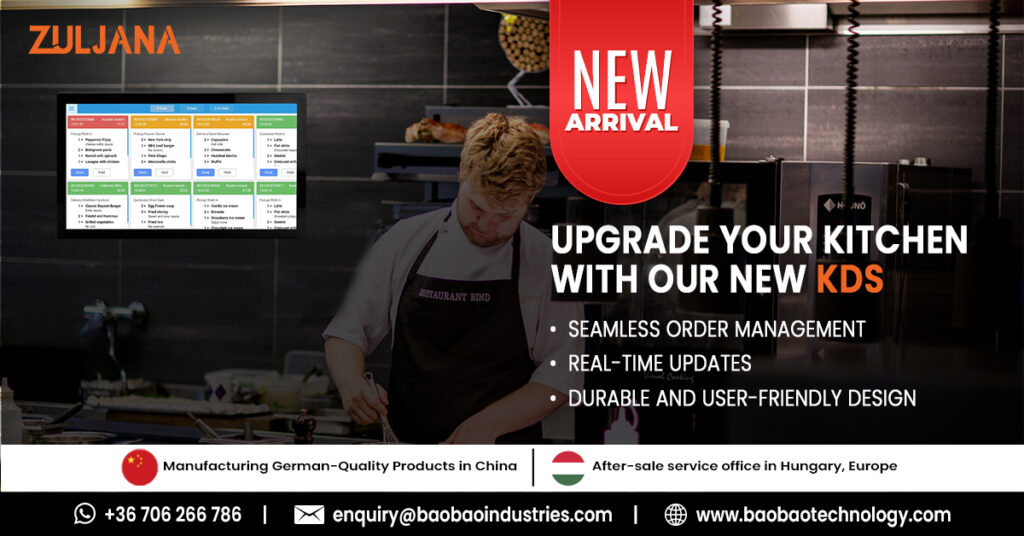
New Arrival
BaoBao Technology has recently introduced a Kitchen Display System (KDS)







